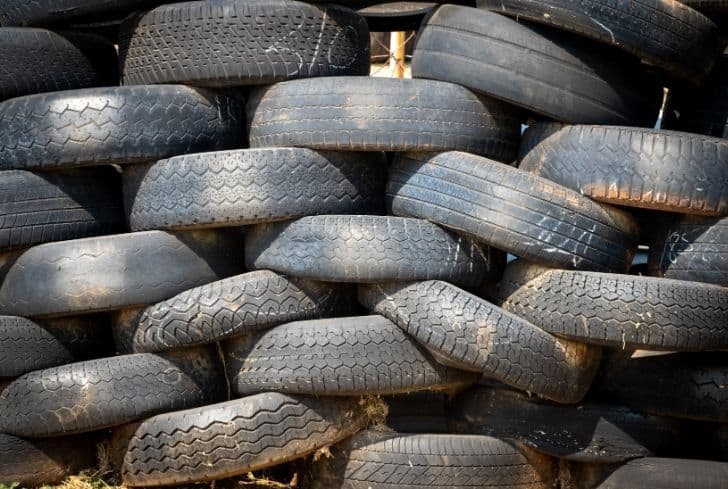Manufacturers use rubber for almost everything. This makes it an indispensable material across industries. From gardening tools to automobile parts to virtually anything, it is obvious that the world relies on rubber.
So, what is the biodegradability state of rubber? How long does it take to biodegrade? Is rubber sustainable? And how do you dispose of rubber? These are popular environmentally friendly questions you may ask when discussing the properties of rubber. Keep reading for the answers.
Is Rubber Biodegradable or Non-Biodegradable?
The answer depends on the type of rubber in question. There can be biodegradable and non-biodegradable rubber; the base resource used in manufacturing the products determines its biodegradability. There are synthetic and natural options in the case of rubber products.
Synthetic rubber products are non-biodegradable because they are mostly made from materials that are petroleum-based. Crude oil is the primary source material for plastic products and other manufactured items.
Unfortunately, plastics are non-biodegradable, which means rubber products made from plastic are also non-biodegradable. The inorganic nature of this type of plastic makes it impossible for the activities of microorganisms to break down plastic or any other kind of synthetic material.
In contrast, biodegradable products are more susceptible to degradation, and the process happens fast. They are made from resources that are organic and capable of breaking down by factors aside from the weather.
The rundown of the difference between biodegradable and non-biodegradable materials is that they are made from different types of latex. One is organic while the other isn’t.
Organic rubber is made from latex, the sappy liquid derived from rubber trees. The extracted material is dried, washed, and sent out in the form of sheets that manufacturers can make into an array of rubber products.
On the other hand, synthetic rubber is made from polymers that never biodegrade. Instead, they enjoy durability that ensures the products last a long time. But this is a downside when it comes to the post-use life.
Some products manufactured with natural rubber may not be a hundred percent organic. They may contain up to five percent synthetic polymers, giving them a non-biodegradable quality.
Rubber must be hundred percent natural for it to qualify as biodegradable.
How Long Does It Take Rubber To Biodegrade?
Rubber will biodegrade in ten to hundreds of years. It depends on how it was manufactured and the materials involved in its creation. In other words, rubber that is made from natural latex without any synthetic polymers will break down in ten to forty years while those with artificial polymers will require longer for decomposition.
Surprise: it takes rubber up to forty years for biodegradation to happen. Rubber may be a natural resource and organic matter, but its durability during its post-manufacture period also extends to its post-use life.
If it is made entirely from rubber, this makes much difference. There is a difference – microorganisms that biodegrade organic matter can break it down into its simplest form.
In contrast, non-biodegradable rubber never biodegrades finally. Let’s make that clear.
The degradation process of this class of materials does not happen the way it happens when the items in question are hundred percent biodegradable.
Instead, the weather and atmospheric factors like rain, sun, and oxygen will eventually wear down the structural composition of rubber, breaking it into the smallest portions over time.
But the downside is that the time is often prolonged. There is another downside, which is that the materials never break down completely. Since this type of rubber is made from plastic polymers, the leftovers never dissipate.
Instead, they remain in the ecosystem as particles, called micro and nano-plastics. These are the smallest units or compositions of plastic polymers. Plastic polymers are incapable of utter decomposition, and the results they leave behind are toxic to the environment and biodiversity.
To answer the question of how long it takes rubber to biodegrade, the answer is anywhere between ten to hundreds of years. Even made from natural resources, rubber is not easily biodegradable, so it does not break down fast because of the manufacturing process.

Are Rubber Tires Biodegradable?
An item is biodegradable if made purely from natural and organic resources. It may take a long time to biodegrade eventually, but you are assured that natural breakdown is inevitable, and it must be total. This is what disqualifies rubber tires from being biodegradable. They are mixed with an array of substances to improve durability and other essential requirements.
Tires are durable products that the automobile industry relies heavily upon. Yearly, the world consumes 1.6 billion units of tires, and less than a tenth of this waste is recycled.
This means rubber tires are disposed of in alternate ways, and it is easy to guess that the disposal doesn’t have the best effect on the environment, given the non-biodegradable nature of synthetic tires.
Without the additional substances introduced to the manufacturing process, rubber tires will eventually break down.
However, additives like silica, chemicals, synthetic rubber, curing systems, and carbon black, make rubber tires less and less biodegradable, although they make them more durable and efficient against the inefficiencies of on-road and off-road locations.
Difference Between Synthetic Rubber and Natural Rubber
You may be wondering if there is a difference between synthetic and natural rubber, and there is! Synthetic rubber is derived from petroleum-based chemicals and substances to encourage durability. On the other hand, natural rubber is obtained from the latex of plants, making it wholly organic.
Natural rubber is an organic derivation from the sap of latex plants. The particular plant species is Hevea brasiliensis, popular in the south of Asia and Southern America.
Latex is naturally resilient, but it is often not strong enough to withstand the use cases of some of the rougher applications it is popular for, such as the manufacture of tires. This is where synthetic rubber comes in.
Synthetic rubber is made by combining different chemicals with the petroleum-based version of rubber material. Rubber can be modified to be better suited for higher temperature ranges and better equipped against wear and tear elements like caustic chemicals and degrading oils.
This makes synthetic rubber products more durable than natural rubber. But of course, in terms of environmental friendliness, natural rubber emerges victorious.
Natural rubber breaks down faster than synthetic rubber. It is also better for the environment because it does not release harmful substances into the ecosystem during decomposition. Still, the same cannot be said about synthetic rubber.
If anything, synthetic rubber does not go away fast. It biodegrades much slower than its natural counterpart.
Is Rubber Sustainable?
The answer is yes and no. Rubber is sustainable because it is derived from a natural and renewable resource. But again, rubber is one of the world’s highest-demanded resources, which puts a strain on it. On the other hand, synthetic rubber, which is also a type of rubber in high demand, is less sustainable than natural rubber because it relies on non-renewable resources for production.
Rubber is sustainable when it is harvested with environmental consciousness as the priority. Done this way, the manufacturers collect the sap from each tree’s bark with caution, knowing that the maturity of a single tree requires at least seven years.
That being said, rubber is sustainable when the sap is collected cautiously. But considering the high demand for rubber products, it is easier said than done.
On the other hand, rubber that is derived from petroleum is not sustainable at all. This is because these products are also in high demand, especially in the automobile industry, among other commercial uses.
Petroleum is a limited resource and can be depleted if alternatives are not considered soon enough and taken seriously.
Is Vulcanized Rubber Biodegradable?
Yes, vulcanized rubber is biodegradable, despite its curing process. The use of peroxide to treat rubber is not a new manufacturing process. It exists to provide more durable and wear-and-tear-resistant rubber products for consumption. Thankfully, some microorganisms can break it down.
Rubber can be made more sustainable through vulcanization. It happens only with natural rubber and is a good manufacturing solution because it makes products more durable, reducing the strain on our natural resources.
However, there are concerns that the vulcanization process reduces the ability of rubber to biodegrade naturally, especially when it is made from a hundred percent natural rubber.
Put your mind at ease because it has been discovered that microorganisms can biodegrade vulcanized rubber. Some microbes that will break it down include Pseudomonas citronellolis and Streptomyces coelicolor.
But, of course, the process will be longer because of the reinforcement that has already taken place.
How Do You Dispose of Rubber?
It depends on the type of rubber you want to dispose of, but you can compose, recycle, and upcycle rubber waste. Synthetic rubber cannot be composted, so you must recycle or upcycle it. On the other hand, there is no such restriction when disposing of natural rubber because it breaks down organically.
As always, ensure you reach out to your local recycling center to find out if rubber waste products are acceptable.
You can also consider crafty ways to reuse rubber waste.
Conclusion
Rubber is biodegradable, but only if it is all-natural. This means synthetic additions make it impossible for natural decomposers to break it down. as much as possible, avoid using synthetic rubber, but if you cannot, reuse, recycle, and repurpose where possible.






